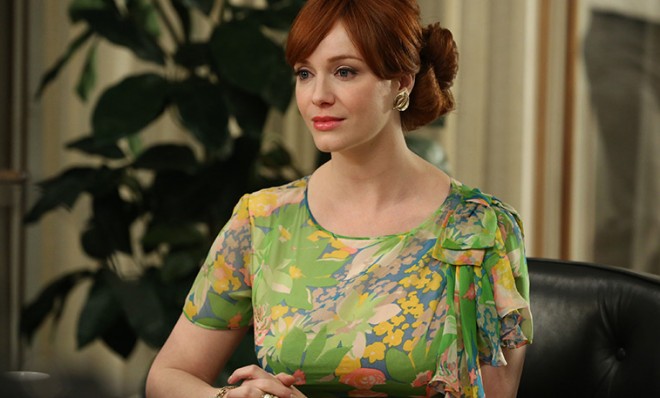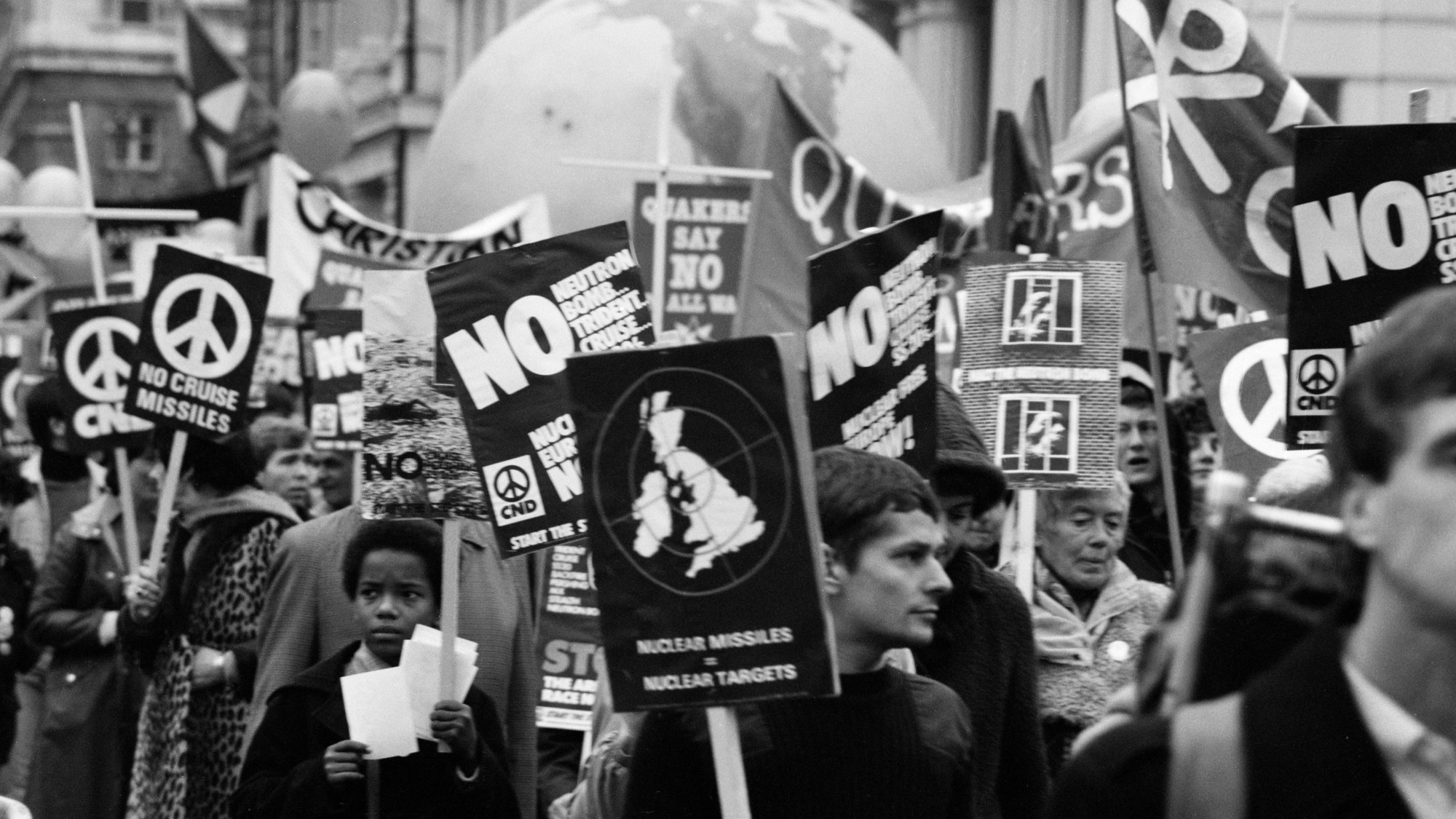Mad Men recap: 'A Tale of Two Cities'
A trip to California sees both Mad Men and Don Draper treading water


Mad Men has a drug problem.
Two of the past three episodes — including Sunday's "A Tale of Two Cities," which saw Don smoke hashish in California — have featured extended drug trip scenes that follow the same arc: Don takes a questionable drug he receives from a stranger, which nudges him a little further down the existentially fraught path by which he defines his life. Tonight's hashish trip even came with yet another patented Don Draper hallucination, as Don imagines a Bizarro World hippie version of Megan, dropping ominous references to a "second chance" as she rubs her pregnant belly.
This kind of symbolically convenient sequence is catnip for both writers (because it allows them to bluntly spell out subtext) and directors (because it lets them screw around with all kinds of cute, weird filmmaking tricks) — and done well, the combo of the two can even work. Consider season five's brilliant "Far Away Places," which smartly sandwiched Roger's first LSD trip between two less experimental stories: Peggy's bad day at work, and Don's first major marital spat with Megan.
The Week
Escape your echo chamber. Get the facts behind the news, plus analysis from multiple perspectives.

Sign up for The Week's Free Newsletters
From our morning news briefing to a weekly Good News Newsletter, get the best of The Week delivered directly to your inbox.
From our morning news briefing to a weekly Good News Newsletter, get the best of The Week delivered directly to your inbox.
But Mad Men's over-reliance on the device has turned what once felt like an illuminating stylistic deviation for the show into a lazy crutch; when Don stares over his own body floating lifelessly in the pool — which is, I presume, not what Megan meant when she suggested going for a swim — I was ready for Mad Men to pull a Ginsberg and swear off the stuff once and for all. (Though at least we weren't subjected to yet another tragic chapter from the unbelievably hard-knock life of young Don Draper.) It's possible that the increasingly freewheeling, chaotic nature of Mad Men's sixth season is a creative choice intended to evoke the increasingly freewheeling, chaotic nature of the era in which it's set — but that doesn't make its excesses any less frustrating to watch.
So yes, I wish I could sit Mad Men down for an intervention. But even if Don continues, maddeningly, to tread water, there are other things to admire about "A Tale of Two Cities," which marches on through the chaos of the newly merged advertising firm and the chaos of 1968. This week's Big Historical Event™? The riots at Chicago's Democratic National Convention in August. Though our main characters on both coasts were hundreds of miles away, they're all clearly rattled by the event, which crystallized many of the political tensions of the time.
In fact, "A Tale of Two Cities" gave us our own microcosm of the brewing political tension dividing the country with a loud argument between Jim Cutler and Ginsberg. The fight begins when Jim Cutler demands that Ginsberg forget his political opinions long enough to do his job, and ends with Ginsberg calling Cutler a fascist and a Nazi — which is rarely the most productive way to make someone consider your side of things.
Cutler and Ginsberg had the flashiest argument of "A Tale of Two Cities," but the real interoffice intrigue came from Joan, who makes the uncharacteristic decision to cut Pete Campbell out of a major deal by attempting to snare her very own account — Avon cosmetics — without him. Joan's unlikely ally is perpetual frenemy Peggy, who helps Joan navigate the professional minefield unscathed (though with a fair amount of reluctance). The episode ends before we know if Joan managed to win Avon's head of marketing over, though their meeting seemed more than promising. Unfortunately, it also came at a cost: The vocal ire of the eternally petty Pete Campbell, who will surely seek revenge. (Then again, all Pete seems to do lately is seethe ineffectually at everybody, so Joan will probably be fine.)
A free daily email with the biggest news stories of the day – and the best features from TheWeek.com
But for all the action happening in the main office, the bulk of "A Tale of Two Cities" was set in California — a destination that has never led to Mad Men's strongest episodes. Here, as in season two's "The Jet Set," Don took a business trip without any real business, settling in at a party with a bunch of spaced-out hippies and movie executives (including our long-lost friend Danny Siegel, who has left the world of advertising for the film business). It's also here that Don tries hashish, making out with the hostess and stumbling into the pool until Roger — who, despite dubbing himself a "curious child," makes for a passable lifeguard — pulls him to safety.
(And before we leave the party: Last week, the internet was abuzz with a theory arguing that Megan Draper is essentially a fictional version of model and Manson family victim Sharon Tate. I remain enormously skeptical that Megan's character arc will end with her being murdered, but Don's hallucination in "A Tale of Two Cities" is likely to stoke the fire even more; both her California hippie appearance and her reference to pregnancy bring her even closer to her real-life doppelganger.)
As Don and Roger returned to New York, Don slips out of California mode and back into the all-business version of himself that we're accustomed to seeing. "Be slick, be glib, be you," advised Roger on their flight to California — which, unbeknownst to Roger, means to Don that he shouldn't be himself. Don has worn the mask long enough that there's not much left behind it — and apart from the occasional dream, drug trip, or unexplained hallucination, he's out of touch with the person he used to be.
Back in New York, the partners have finally settled the longstanding argument about what to call their agency. The firm's new name, Sterling, Cooper, and Partners, seems to herald a brighter future for the advertising supergroup briefly known as SCDP-CGC (though it also scrubs the two deceased men who helped to build those two firms — Lane Pryce and Frank Gleason — out of their history). But even if Don Draper, Jim Cutler, and Ted Chaough have agreed to put their egos aside for the greater good, it's intriguing to consider what the "new" name really symbolizes: A return to Mad Men's original status quo, when the series began at an old-fashioned firm called Sterling Cooper.
From this week's second trip to California to Don's tryst with Betty in last week's episode, there are signs that Mad Men is beginning to double back on itself. Is Mad Men making a greater thematic statement by deliberately echoing its past — or is this just a sign that, after six seasons, the show has finally started to run out of new things to say? There are three episodes left this season for Mad Men to make its case one way or the other, and I'm crossing my fingers that this season won't end without showing us something new again.
Read more Mad Men recaps:
* Mad Men recap 'The Better Half'
* Mad Men recap: Fifty Shades of Draper
* Mad Men recap: 'For Immediate Release'
* Mad Men recap: 'The Flood'
* Mad Men recap: To have and to hold
* Mad Men recap: Sex, lies, and a ketchup account
Scott Meslow is the entertainment editor for TheWeek.com. He has written about film and television at publications including The Atlantic, POLITICO Magazine, and Vulture.
-
 The history of US nuclear weapons on UK soil
The history of US nuclear weapons on UK soilThe Explainer Arrangement has led to protests and dangerous mishaps
-
 Tea with Judi Dench: ‘touching’ show is must-watch Christmas TV
Tea with Judi Dench: ‘touching’ show is must-watch Christmas TVThe Week Recommends The national treasure sits down with Kenneth Branagh at her country home for a heartwarming ‘natter’
-
 Codeword: December 24, 2025
Codeword: December 24, 2025The daily codeword puzzle from The Week
